SHA 2013: Coming and Going
Planning for SHA 2013 in January continues here in Leicester. Conference registration opens at the beginning of October, and information about how you can help by volunteering at the conference will be available soon.
In the meantime – don’t forget to arrange your travel to Leicester! The conference team has put together this guide to travelling to the city and we have now arranged a special deal with East Midlands Trains, who operate trains between London St Pancras and Leicester. Advance return travel between the two cities will be available from £27 standard class, and £42 first class for travel during the conference; a significant saving on the cost of train tickets purchased at the station on the day. Train fares will increase from 1st January 2013, so make your booking before this date to get the lowest fares. You can find out more about how to take advantage of this deal by downloading this document.

An express train leaving London St Pancras for Leicester in 1957. Modern engines and rolling stock are used now; sorry about that.
London St Pancras is something of a visitor destination in itself. The station opened in 1868 as the southern terminus of the Midland Railway, which ran services between London, the East Midlands, and Yorkshire. The train shed was designed by the Midland Railway’s own engineer, William Barlow, and with an arch span of 240 feet, over 100 feet high at its apex, the train shed roof was the largest single-span roof in the world.
The station facade was completed with the construction of the gothic Midland Grand Hotel, which opened in 1873 and was designed by Sir George Gilbert Scott. The hotel was a pioneering building at the time, ornately decorated and boasting hydraulic lifts, fireproof concrete floors, revolving doors and a fireplace in each of the 300 bedrooms.
By the 1930s, the hotel had become outdated and the building was used for railway company offices. After the Second World War, the station too was deemed to be outmoded, and during the 1960s it was proposed that the station should be closed, and demolished along with the hotel. This caused uproar among the growing conservationist movement; the neighbouring Euston Station had been demolished in 1961-2, amid much public outcry. The poet Sir John Betjeman spearheaded a campaign to protect the station, and in 1967 St Pancras station and the former hotel were listed Grade I, protecting the complex from demolition.
In 1996 St Pancras was selected as the location for the permanent terminus for the Eurostar trains travelling through the Channel Tunnel to continental Europe, and a long programme of reconstruction and restoration work began; the station fully re-opened in 2007, and the restored Midland Grand Hotel followed in 2011.
So if your journey to Leicester involves taking a train from St Pancras, do stop to take a look around.
Image 1 by Ben Brooksbank via Wiki Commons (CC BY-SA 2.0)
Image 2 via Flickr (CC BY-NC 2.0)
“I Remember, I Believe”: A Documentary
 “I Remember, I Believe” is a video documentary that tells the story of the Avondale Burial Place. This unmarked burial ground was discovered by the Georgia Department of Transportation during planning for the Sardis Church Road extension project and was recovered, analyzed, and relocated by New South Associates. The cemetery contained the remains of 101 African Americans, most of who were buried in the late 19th century during the era of tenant agriculture. Analysis of the skeletal remains and grave goods testify to the harsh conditions experienced by African American tenant farmers, conditions that led to the Great Migration and African Americans departure from the South for jobs in the industrialized cities of the Northeast, Midwest, and West. Through archival and genealogical research, the project team was able to identify descendants of the burial community, who were consulted during the project, interacted with the archaeological team, and commemorated the relocated cemetery. DNA testing has confirmed the connections between these families and the burial community. The video documentary chronicles this process, in addition to telling the story of those who were buried at the Avondale Burial Place.
“I Remember, I Believe” is a video documentary that tells the story of the Avondale Burial Place. This unmarked burial ground was discovered by the Georgia Department of Transportation during planning for the Sardis Church Road extension project and was recovered, analyzed, and relocated by New South Associates. The cemetery contained the remains of 101 African Americans, most of who were buried in the late 19th century during the era of tenant agriculture. Analysis of the skeletal remains and grave goods testify to the harsh conditions experienced by African American tenant farmers, conditions that led to the Great Migration and African Americans departure from the South for jobs in the industrialized cities of the Northeast, Midwest, and West. Through archival and genealogical research, the project team was able to identify descendants of the burial community, who were consulted during the project, interacted with the archaeological team, and commemorated the relocated cemetery. DNA testing has confirmed the connections between these families and the burial community. The video documentary chronicles this process, in addition to telling the story of those who were buried at the Avondale Burial Place.
Information on the project, as well as copies of the technical reports (found under the Reports tab on the News page) may be obtained from the project website – www.avondaleburialplace.org.
Diversity and Anti-Racism in the Society for Historical Archaeology
The epilogue of Leland Ferguson’s Uncommon Ground: Archaeology and Early African America, 1650-1800 is a disarming and profoundly thoughtful account of his experience of life across the color line and how it informed his scholarly career. Ferguson’s book is justifiably heralded as one of historical archaeology’s most important contributions to the scholarship of African cultural persistence in the face of captivity, yet we risk overlooking the provocative epilogue that situates such scholarship in Ferguson’s own experience and in broader historical archaeology. Uncommon Ground’s succinct epilogue provides an important statement about the politics of historical archaeologies conducted across and along lines of difference, and a discussion about those politics can contribute to an increasingly rich and reflective scholarship and diverse archaeological community.
Ferguson’s epilogue relates a story of him and a boyhood friend watching an African-American railroad “gang” laying rails in a sweltering 1949 summer. An elder member of the group lorded over the workers, singing in a “rich, melodious voice” in time with hammers driving the rail, an experience that left the two boys “spellbound and envious.” That fascination and envy with African America has often been felt by many White people who have been equally spellbound if mystified by a rich culture that has persisted with strength, creativity, and dignity in the face of profound injustice. Many White historical archaeologists—myself included–have devoted much of our scholarship to illuminating African America’s centrality in American life because we share Ferguson’s humility in the face of the African-American experience, respect for this rich heritage, and conscious complicity in a half-millennium of anti-Black racism.
Ferguson acknowledges that he and his friend “heard and felt that workday performance in ignorance,” largely because they “had few black acquaintances and no black friends.” When his friend addressed the singer with a racist epithet, the boys were soundly rebuked and felt “rejected and confused.” Ferguson admits that through his “teenage years the alienation continued, and I alternately and somewhat arbitrarily enjoyed, scorned, and admired `colored people’ without ever knowing a single African American.”
That concession of fascination and admiration in conflict with apprehension and confusion is an exceptionally rare scholarly acknowledgement of the complications of life lived along and across color lines (compare Whitney Battle-Baptiste’s June 2012 SHA Blog for a similar example from an African diasporan perspective). Ferguson found himself in the midst of the South during the Civil Rights movement, and he recognized his White neighbors “struggled to rationalize away the guilt of imposing or accepting an inequality so familiar that most had never perceived it as unjust.” He acknowledges that he “came to see that the movement was reinforcing justice and compassion as basic American values,” and he began to comprehend that a deep-seated cultural heritage “beyond the eye and mind of the white majority” fueled the Civil Rights movement and rested at the heart of American heritage.
That recognition that racism was silently situated at the heart of American life and aspired to efface diasporan heritage provides an articulate coda underscoring the political significance of Ferguson’s study. Historical archaeologists have produced an enormous volume of illuminating, reflective, and even activist scholarship on the African diasporan experience and life along the color line for which we can feel justifiably proud. Nevertheless, Ferguson’s revelatory honesty is the sort of politics that we rarely see in print, and while many of us can honestly claim good works in our own local projects they often do not become public knowledge or accepted disciplinary practice, and they are not especially clearly stated as our common philosophical and sociopolitical interests.
Our pride in a rich African diasporan archaeology or our disciplinary attention to historical social complexity should not blind us to the need to ask difficult questions about diversity in contemporary historical archaeology, and SHA has the opportunity to lead a challenging and transformative discussion about the ways in which equity, privilege, and race shape every dimension of our lives, scholarship, and practice. We have collectively done an astounding amount of good research and community outreach, but we need to articulate that work in ways that acknowledge disciplinary inequalities; we should situate SHA in conscious opposition to structural inequalities in broader society; and we must continue to develop concrete mechanisms to make SHA a welcoming professional home for a broad range of members whose voices can shape archaeology and impact the communities in which we live. A historical archaeology practiced by a rich range of scholars that assertively examine global diversity is simply good scholarship that is true to a breadth of experiences and systemic inequalities throughout the world over 500 years.
Certainly many of the first archaeologists who gathered in 1967 to form the SHA were focused on British colonial heritage and the spread of European cultures and materiality in the New World. Questions about globalization and social diversity gradually trickled into the research questions and discussion: Charles Fairbanks, for instance, soon led archaeologists into African diasporan archaeologies, and James Deetz profoundly shaped the discipline by advocating archaeological attention to the many peoples ideologically forgotten in historical narratives. Many of us continue to justifiably focus on colonial European subjects, but that work is inevitably enriched by a rigorous and reflective focus on diversity, just as archaeologists examining race need to push beyond archaeologies of African America. For instance, there is the potential to do an exceptionally interesting historical archaeology of race among White consumers who often embrace—and routinely evade—the privileges of White subjectivity. This attention to social diversity certainly does not discard all the illuminating historical archaeologies of colonial European contexts, but scholarship revolving around race, patriarchy, classism, sexuality, or ethnicity can be embedded into many archaeological studies that sometimes are conceived by us as being somehow “outside” diversity. The “questions that count” in contemporary historical archaeology simply must address diversity to be rigorous and challenging scholarship. The weight of such scholarship can have profound effects on how many of our neighbors view our collective heritage and in turn how they view contemporary lines of difference, so confronting disciplinary and SHA inequalities and embracing diversity among membership and in our scholarship are important missions for SHA.
SHA has underscored its commitment to equity and diversity in the last year, with the ambition of being an increasingly diverse membership that provides a welcoming professional home for a wide range of scholars. One step in this process was my participation in a People’s Institute Undoing Racism workshop in Washington, D.C. in July. Gender and Minority Affairs Committee Chair Florie Bugarin attended the workshop with me and about 40 people who worked for a variety of non-profits and community organizations as well as neighborhood folks from Washington. This is quite a different group than virtually any scholarly conference, classroom, or excavation site, but in many ways it would be a familiar and illuminating discussion for the many historical archaeologists who conduct community archaeologies and are committed to engaged scholarship—often across color lines and power divisions.
Many historical archaeologists have given thought to the complications of scholarly/community partnerships, but we have not often considered how racism shapes such relationships or how White scholars exercise privilege without even recognizing it as such. A 2011 SHA Newsletter piece by Michael Nassaney and Cheryl LaRoche, for instance, discussed the persistent impression of racism on American life and the ways it and White privilege inevitably have an impression on historic archaeology practice and the very organization of SHA itself. Anna Agbe-Davies joined this conversation in the Spring 2012 Newsletter, arguing that Nassaney and LaRoche’s column underscores the need to encourage both organizational change in SHA and individual good works—for instance, as we transform structural inequalities vested in organizations like SHA, we can individually take small but consequential steps like those often-invisible trips to local elementary schools, the energy devoted to championing equity in our local institutions, and all of our voices advocating for an archaeology that reveals the historic roots of inequality. The People’s Institute experience framed a larger discussion about how power is vested in organizations like SHA, how a broad range of members with different degrees of access and power are served by SHA, and how all of our members can secure genuine agency and grow professionally within SHA.
These discussions have led to a series of initiatives that are intended to make our mostly unspoken disciplinary and SHA commitment to diversity concrete and increasingly part of our structural practice.
- One of the first steps was a diversity training course at the June, 2012 SHA Board Meeting. That training session provided an all-day experience for the Board and the GMAC Chair to begin discussing the specifics of what diversity actually means in the context of historical archaeology and SHA; what are our expectations for what a diverse membership does for the discipline; and how can we make diversity a structural dimension of all historical archaeology and SHA practice, and not simply a research niche. I and Florie Bugarin then attended the People’s Institute Workshop a month later. These discussions are simply beginning to move all of our disparate thoughts into collective space, but they seem an essential prelude to developing any genuine initiatives.
- At the June Board meeting two Minority Travel Scholarship Awards also were approved by the Board, and they will defray travel costs for two students attending the Leicester conference in January 2013.
- The Board agreed in June that President-Elect and Ethics Committee Chair Charlie Ewen will direct a revision of the Ethics Statement that will include an SHA Statement on Sexual Harassment, Gender Equity, Antiracism and LGTB Inclusivity.
- Directed by Membership Committee Chair Barbara Heath, a member’s survey will be conducted in 2013 to secure demographic data more recent and somewhat more focused on dimensions of diversity than the 2008 Member’s Needs Report.
Historical archaeologists have long embraced an archaeology of peoples who have been structurally silenced and ignored as their experiences are effaced from dominant narratives. SHA is committed to supporting such work because it is simply good scholarship that is true to our collective heritage, and working to mirror the same diversity in our membership is simply true to contemporary social life. As Leland Ferguson’s Uncommon Ground epilogue stresses, lived inequalities inevitably shape our scholarship, but we have not often examined how our collective experiences become part of the structural fabric of academic departments, cultural resource management firms, or the SHA itself. Many of us have had these conversations with colleagues for years on excavation sites, in department meetings, and even in the hallways of SHA conferences, asking ourselves how we can foster reflective transformations in institutions and everyday practice. We need to keep moving that discussion into our shared disciplinary discourse and make it part of good practice, pressing to ensure that historical archaeology and SHA practice genuine equity in our scholarship and advocacy and welcome a breadth of voices.
Archaeology and the Community
Over the past two years, I have been responsible for creating a wide variety of educational outreach programs for the Exploring Joara Foundation, a small public archaeology organization in western North Carolina. This summer has been particularly scorching, and as we slowly stew in the thick heat of summer it is easy to forget that our role as archaeology educators goes well beyond our responsibility to stress the need for the preservation of archaeological resources and the understanding and appreciation of past cultures. We may be the only real face of archaeology that the public sees, and it is our responsibility to not only make an impression that breaks the stereotype of treasure hunter, but to also inspire children and adults to ask more questions about the past and to become directly involved with its preservation. This is the only way the public will not just know the importance of preservation, but leave with the belief that it is their responsibility to make that a reality.
The Exploring Joara Foundation is a perfect example of what results from putting the past in the public’s hands. The non-profit was formed in 2007 by members of the Morganton community with assistance from head archaeologists at the Berry Site. The foundation’s goal was to help support professional archaeological research at the site. It has since grown to incorporate a public education program dedicated to promoting awareness and understanding of archaeological resources. This has put the organization in a fairly unique position. It is not tied to any specific school, institution, or state. Instead, the foundation was born from the local community’s desire to share the archaeology of their hometown and to preserve its history. Though we are over an hour away from any metropolis, our wide variety of outreach has provided us with a steady stream of students, scouts, teachers, homeschool groups, campers, and community members that are eager to learn more about the region’s archaeology. The foundation now functions as a year round resource for the community, offering free and paid programming to the public, while still helping to support professional archaeological research at the Berry site.
Before 2010, the foundation only funded one public open house at the Berry Site each year. During those public days we heard numerous suggestions and requests from the community on what they felt we should offer. By building our outreach around their requests, we have been able to accommodate a broad range of ages and interests. The foundation now supports talks at local schools and organizations, teacher workshops, summer camps, and field and lab experiences for all ages. We added each of these programs only after listening carefully to the public on what they wanted or felt was needed for the community. This is essential to creating a public archaeology program that really works. It’s certainly a trial and error process, but knowing what the public wants is crucial.
One of the requests we heard most was for archaeology experiences for kids too young to participate in the Berry Site Field School. With direction from Dr. Theresa McReynolds Shebalin, the foundation is now able to offer camps for both middle school and high school students in July and August. The campers have a similar experience to field school students at the Berry Site as they work alongside professional archaeologists to uncover the remains of a 16th-century Catawba town and Spanish fort. Campers revel in knowing that they are contributing to research and that their interpretations may find their way into the professional archaeologists’ dialogue. During the hotter part of the day, campers take part in experimental archaeology projects, artifact analysis, archaeology games, and crafts. The camps are designed to be discussion based in order to give kids the opportunity to ask questions and pose hypotheses so that they can feel directly involved with the research. This year those discussions led the middle school students to ask questions such as: can you tell the difference between carbonized corn that has been cut or eaten off the cob? The question resulted in a blind experiment to determine if the campers could tell the difference with corn from the store burned behind the field house. At the end of the week, students leave the camp with the feeling that archaeology is a field that is accessible and possible to pursue as a career. It is necessary to make sure each person leaves not only with a better understanding of the past and an appreciation for preservation, but with a feeling that they participated in adding to ongoing academic research.
Since we can’t reach a large number of students through camps, the foundation also runs workshops geared toward 4th-8th grade teachers. On the first day, teachers learn about North Carolina prehistory and the science of archaeology through hands-on activities that they can adapt for use in their own classrooms. During a make-and-take session, teachers are encouraged to come up with their own practical applications with guidance from Exploring Joara staff. Over the past three years, we have observed that this flexible approach results in a better success rate of the material being used in the classroom than when teachers are simply introduced to standard lesson plans. On the second day, the teachers go out into the field to work at the Berry Site. This hands-on time is critical and even resulted in one teacher bringing her high school class to the site for an excavation workshop the following fall. To me, this is a perfect example of community action resulting in a more educated public.
Exploring Joara is a relatively young foundation, with an even younger public archaeology program. It was built by the community and therefore has strong public support and interest. This support is evident in the continued respect and protection of the Berry Site. The well-known site’s only security is the watchful eye of neighbors and community members who are proud of their local history and the site’s significance. I continue to be thankful for that support and know that without the public, the foundation and its unique programming would not exist. I hope to see programs like this continue to form out of the public’s desire and encouragement. If the small town of Morganton, North Carolina can garner enough interest to create a year round educational program, could this be the future of public archaeology? Have you seen a shift in public interest and concern in other areas of the country? Are there other avenues that we could pursue as archaeology educators that would reach a broader population or have a greater impact on the community?
SHA 2013: From Kampala to Leicester
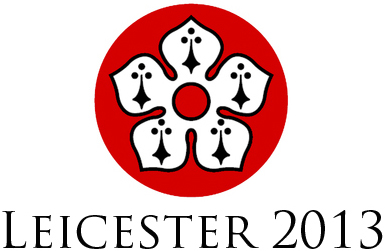 The Call for Papers for the SHA conference in 2013 closed on 10th July, and the Program Committee is now busily reviewing all of the abstract submissions, before putting together the conference program, which will be announced later in the year.
The Call for Papers for the SHA conference in 2013 closed on 10th July, and the Program Committee is now busily reviewing all of the abstract submissions, before putting together the conference program, which will be announced later in the year.
In the meantime, and happily coinciding with the conference theme of Globalization, Immigration, Transformation, blog followers who find themselves in Leicester at some point over the summer might like to visit the city’s New Walk Museum and Art Gallery, which is hosting a new exhibition, celebrating the 40-year history of Leicester’s Ugandan Asian community.
From Kampala to Leicester: The Story of Leicester’s Ugandan Asian Community, 1972 – 2012 marks the 40th anniversary of the expulsion of the South Asian community from the former British protectorate, which had won independence in 1962. Many South Asians lived in Sub-Saharan Africa, brought there from British India by the Imperial service during the late 19th and early 20th centuries to undertake clerical work and manual labour. In August 1972, the then-President of Uganda Idi Amin ordered the expulsion of the country’s South Asian community, exploiting existing fears and perceived concerns about the South Asian minority in Uganda.
About 60,000 South Asians were given 90 days in which to leave the country. As a former British colony, many Ugandan Asians held British passports; 27,000 arrived in the UK, despite warnings in the media and from right-wing politicians that there were few opportunities for migrants. Leicester City Council even advertised the lack of opportunities in the city in Ugandan newspapers, hoping to dissuade potential arrivals, but the city’s approach changed once very traumatised refugees began to arrive, and local charitable groups rallied round to provide accommodation and support.
The new exhibition profiles how the 10,000 Ugandan Asians who arrived in Leicester adapted to life in the UK, and the developing role of the community in the cultural life of the city over the last four decades. The exhibition runs until 30th September 2012, and has a full programme of accompanying events, including lectures, dance workshops and film screenings.
This film, which features interviews with some of Leicester’s Ugandan Asian community, has been produced by the East Midlands Oral History Archive as part of their Migration Stories project.
Image: Maz Mashru
National Geographic’s Diggers Redux
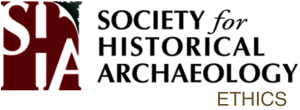 In my previous blog I reported on a meeting I attended at the National Geographic’s headquarters in Washington to discuss the problems with their reality show, Diggers (not to be confused with Spike’s American Diggers) You remember Diggers, don’t you? Two metal detectorists, “King” George Wyant and Tim “The Ringmaster” Saylor, would travel the country looking for treasure, competing to see who find the most loot at historic sites. Needless to say, the profession howled (read SHA’s response here) and National Geographic heard us. They pulled the show until they could get a sense of how to address the concerns of outraged archaeologists.
In my previous blog I reported on a meeting I attended at the National Geographic’s headquarters in Washington to discuss the problems with their reality show, Diggers (not to be confused with Spike’s American Diggers) You remember Diggers, don’t you? Two metal detectorists, “King” George Wyant and Tim “The Ringmaster” Saylor, would travel the country looking for treasure, competing to see who find the most loot at historic sites. Needless to say, the profession howled (read SHA’s response here) and National Geographic heard us. They pulled the show until they could get a sense of how to address the concerns of outraged archaeologists.
Two major points came out of the meeting. The archaeologists demanded an ethical show and National Geographic said they had to make money on it. To be ethical there were a couple of basic concepts that could not be breached. There needed to be an explicit concern for recording the context in which the artifacts were found and those artifacts could not be sold. National Geographic, on the other hand, could not produce a show that was a money loser. So, is their a solution that could satisfy both parties?
National Geographic is rethinking their show to address our concerns. In a letter to the profession the show’s producers propose the following:
• We will have a local supervising archaeologist during all metal detecting and digging.
• We will have a full-time crew position for a person with an archaeology degree and field experience; that person will keep a detailed catalog / map of every item we find, process the artifacts in the proper way, and see that whatever person or organization that takes ultimate possession of the artifacts is also provided with the documentation.
• At the end of each episode, we will meet with an archaeologist to discuss the historical importance of the items, and to place them in their historical context.
• We will not place a monetary value on the objects we find. Instead, we will focus on the “historic value” of the items, and the stories they can tell.
• Throughout each episode, we will feature “responsible metal detecting tips,” about laws pertaining to metal detecting: where it’s not okay to go, what to do if you stumble across an important archaeological site, etc. The tips relate directly to the content of each episode, so they will vary widely. These will help to actively discourage illegal relic hunting/looting, and stress that respect is the key to metal detecting responsibly: respect of the law, of the landowner, and of our common cultural heritage.
Sounds good, but they need our help to make it happen. They would like to partner with some ongoing digs and have their detectorists assist in the recovery of artifacts. I know, I know! I saw the shows and the thought of having those two silly men on my site is daunting and some projects are more suited to metal detecting than others. But think of the public you would reach. These are the folks that might normally be out pothunting sites rather than preserving them. I think we need to give Nat Geo a chance to make good on their early blunder, and they HAVE been great supporters of archaeology. So, if you have a site that you think might benefit from their involvement, contact Cory Adcock-Camp at corya@halfyardproductions.com
And remember, no one learns if no one’s listening.
Surviving the Academic Job Talk
It’s summer. As the mercury slides up the thermometer (WAY up the thermometer), several events in the archaeological yearly round appear on the horizon. A host of field schools are in full swing around the globe, anxious graduate students are working to complete fieldwork before returning to the classroom, and there is the usual crop of CRM projects that tax the sweat glands and keep sports drink companies in the black.
For those of us exploring the academic job market, this also means that a new round of position announcements lies on the horizon. For each position, a lucky few candidates will get invited to a campus visit, which will entail a job talk.
The job talk can be an intimidating, highly daunting experience. This post is intended to offer some basic guidance that may assist the prospective with preparing for this talk. I draw upon some printed and electronic sources (there frankly aren’t many available on this subject) as well as some interviews with several scholars who have gone through this process recently and met with success.
Do Your Homework
It should come as no surprise that there is a lot of planning involved in the job talk. Think about who is going to be in the room. If you will be presenting at a large university with a graduate program, you can expect faculty, graduate students, and some upper-division undergraduates. With many departmental web pages now carrying faculty photographs, it’s not a bad idea to be able to identify the faculty on sight, which can help you anticipate queries during the Q and A after the talk and anticipate some of the questions that might be posed to you.
In most departments, the attendees are likely to be at least conversant in the elements of archaeology, though may not be as familiar with historical archaeology, and almost certainly not with your particular focus within historical archaeology, so be prepared to walk them along to the point that you can convey the import of your work. James Davidson, of the University of Florida, suggests that avoiding excessive particularlism can help the candidate show how well-rounded he or she is.
Anna Agbe-Davies (University of North Carolina) points out that as historical archaeologists, we straddle a lot of disciplines, meaning that we might wind up teaching in anthropology, history, or American studies departments, each of which will be more or less familiar with your discipline. It is possible that 75% of the audience may have no meaningful understanding of archaeology, and would therefore need more background than a department crammed full of diggers.
If you don’t do this well, you can expect to get questions on the technical aspects of the work only, and you likely lose the chance to have a substantive discussion of what you just presented. You also want to avoid coming off as interested in an arcane corner of the scholarly world. It’s easy to forget how niche your work is when you’re writing the dissertation. Showing the relevance of your work to larger trends in academic thought, within as well as outside of archaeology, is generally a good thing.
Time and Message Discipline: These are a Few of My Favorite Things
Most of the job talks I’ve attended were allocated an hour. You know what happens at the end of that hour, right? People start looking towards the door, ready to leave. If you talk right up to that hour mark, your audience won’t get to ask questions or will have to stay late, which won’t make you look good to a prospective employer.
Darley and Zannah (1986) suggest that it’s best to take about 75% of the allotted time for your talk. For an hour, this would be about 45 minutes, which is long enough to get to the meaty bits of your research, but not so long that you start unduly taxing people’s attention spans. This will leave a nice amount of room for questions, which there will be (see Practice, Practice, Practice, below). Be sure to check with the host institution before you start planning the talk to make sure you know long you have.
Also, keep on message (avoid ramblings and digressions) and keep an eye on the clock (wear a wristwatch in case there’s not a visible clock in the room). These kinds of discipline are crucial to show that you can organize your talk into a digestible, relatable way. Hit the high points.
The Army* encourages presentations (OK, briefings, but they’re basically the same thing) to consist of three major points, each supported by three subsidiary points. While that structure isn’t going to suit everyone, the idea behind that structure is to present the most crucial elements of the material in a fulsome, but necessarily limited manner, as you don’t have the time and your audience doesn’t have the attention span to ingest all the details of your work.
Technology
Let’s envision a scenario wherein you’re setting up for your job talk at Awesome State University (Go Fighting Crawfish!). You’ve spent the past week constructing what could be empirically verified as the greatest PowerPoint presentation in history. It interdigitates flawlessly with your job talk, the images and data tables tagging off brilliantly with the speech you’re about to give. The recording of the talk (it will probably be recorded) will play on a continuous loop in the Louvre next to the Mona Lisa.
You clear your throat, approach the podium, and you get through exactly five letters (“Welco…”) before a pop and hiss signifies the untimely demise of the bulb in the projector… that is affixed to the ceiling of the classroom… fifteen feet above the audience and reachable only by ladder. There’s no chance that bulb gets replaced anytime tonight, and you must now do your presentation without the aid of visuals (I would not advise trying to compensate by doing shadow puppets with a flashlight).
We’ve all seen this kind of thing happen at conferences. Not so long ago, the slide projector might spit the carousel, or a slide would be in backwards. Nowadays, it might be that the available computer runs OpenOffice or something else not-PowerPoint, and the formatting goes haywire. We can laugh that off because a conference presentation is not a job talk.
This is. Buller (2010:21) observes that candidates can derail their chances for being offered a job by placing their faith in unreliable technology. Never assume that a certain kind of technology will be available, and be prepared for malfunctions. Always take several different formats of your presentation. At minimum, have a laptop with you that has your presentation deck saved on it. Carry additional copies on a flash drive and a CD/DVD (have cuneiform tablets gone out of style yet?). Get these together BEFORE you leave town for the campus visit, as you can’t rely on having the time to make the requisite copies.
I’ll include one other thing that cropped up recently with a colleague’s laptop as she started teaching a class here at Southern Arkansas University. Her brand-new laptop didn’t come with a VGA port. That’s the 15-hole connector on the side of most laptops. Since most folks never use the VGA port, the manufacturer left it out, requiring a special adapter (“dongle”) to add that functionality. Better to find that out before you get in the room to give your talk.
At the most extreme, be prepared to give your talk completely sans power/technology. Buller recommends carrying printouts of essential images or data tables to pass around, should the technology completely fail you. If everything goes smoothly and you don’t need them, they make useful handouts that you can pass along to interested parties at the close of the talk, or useful aids to those with failing eyesight who might have trouble seeing your presentation slides from the audience.
Practice, Practice, Practice (then Practice Some More… and between Practices, Work in Some Practice)
Darley and Zanna (1986) describe the job talk as essentially a performance. Like any play or musical, rehearsal breeds quality and coherence. Know the talk cold. Be able to present it in 16 different languages, and be able to present it backwards in at least 9. Have friends shoot you with paintballs at random while rehearsing so you can practice recovering should you be knocked off your rhythm.
Agbe-Davies suggests that, if you’re a graduate student, get your peer grads together to watch a dry run of your talk. Graduate students can be some of the harshest critics of your work, much more so than faculty, and their comments (politely phrased) can help you anticipate questions that could crop up at the actual job talk or point out shortcomings that you could revise into a subsequent draft of the talk.
Don’t Panic, and Always Carry a Towel
OK, not really. Well, do indeed refrain from panicking, but a towel is not necessary. See Adams (1979) for disambiguation.
If you haven’t sat through job talks at your own institution before, be warned that they can become somewhat tense. Resident faculty may ask some hard, sometimes harsh, questions of the candidate. This is not necessarily intended to expose the speaker’s shortcomings as a scholar, though it might. It could, rather, be a test of the speaker’s ability to carry on rigorous academic debate. One’s ability to match wits with the department’s faculty can significantly add to a candidate’s standing. Matt Liebmann, of Harvard University, encourages us to “NEVER apologize for your work,” and that one’s inclination, when challenged by established faculty, is to become apologetic for its shortcomings. “Deliver your talk with confidence and always stand up for yourself during the question and answer section” (Liebmann, personal communication).
But, don’t fret. You’re not going to anticipate EVERY question, and there is likely going to be something asked that you just don’t have an answer for. Admit that you don’t know, thank the questioner for providing new light on the subject, and write down the question. Whether you get the job or not, you have something to consider in your own scholarship in future. If you have a later job talk elsewhere, you have a chance to prepare for that question, should it come up again. It also shows that you’re engaged with the audience and having a professional discussion with them.
Do you have other thoughts or insights? Post them in the comments section.
Thanks to Dr. Anna Agbe-Davies (University of North Carolina), Dr. James Davidson (University of Florida), and Dr. Matthew Liebmann (Harvard University) for providing insight and reflections on their experience of this process. The above is my recalling and interpretation of their remarks, and I take full responsibility for any mischaracterizations, etc.
References
- Adams, Douglas
- 1979 The Hitchhiker’s Guide to the Galaxy. New York: Harmony Books.
- Buller, Jeffrey L.
- 2010 The Essential College Professor: A Practical Guide to an Academic Career. San Francisco: John Wiley & Sons.
- Darley, John M. and Mark P. Zanna
- 1986 The Compleat Academic: A Career Guide. New York: Random House.
Critical Heritage, African Diaspora Archaeology and the Moment When My Eyes Were Opened.
 I am a blogger. Blogging has become an extension of how I process complex thoughts and ideas. Composing a blog entry is like creating a work of art, allowing me to release myself from the constraints of academic boundaries and just write my inner thoughts and feelings in ways that are liberating and therapeutic.
I am a blogger. Blogging has become an extension of how I process complex thoughts and ideas. Composing a blog entry is like creating a work of art, allowing me to release myself from the constraints of academic boundaries and just write my inner thoughts and feelings in ways that are liberating and therapeutic.
So, this entry is about a recent shift in the way I think about the archaeology that I do, the methods I employ to engage with multiple stakeholders, and the ability to compare my experiences across time and space. This all started when I began to notice that many of the archaeologists around me were starting to talk about this thing called heritage. I presented a paper at an annual conference sponsored by the UMass Amherst Center for Heritage and Society (CHS) about the recent trends in African Diaspora archaeology. I had incredible exchanges with heritage professionals, archaeologists from around the globe who were using unfamiliar language like tangible and intangible heritage, polylogues (as opposed to monologues), and concepts like sites as extensions of public value. I was shocked to learn how different this new heritage differed from my archaic understanding of what heritage was. It was no longer simply the idea of preservation, the built environment, or a tool for nation building, it was about all people, even those who were often marginalized, neglected and underrepresented.
My formal relationship with CHS began when I became a part of a larger project on Eleuthera, an outer island in the Bahamas. Initiated by a local organization, One Eleuthera Foundation (http://oneeleuthera.org/), CHS became a partner in an effort to identify projects and opportunities to “strengthen Eleuthera’s communities and further the economic, environmental and social development of the island” (http://oneeleuthera.org/). This partnership, already going on for a year, involved community engagement, focus groups with a variety of stakeholders, and historical research. There were several viable components to the project, one of which was the possibility for some archaeology of an abandoned 500 acre plantation on the southern tip of the island. I was drawn by the lure of plantation archaeology outside of the Southern United States. However, I quickly discovered that this trip was not about me initiating excavations at Millars plantation, this thing I now know as critical heritage opened my eyes to see realities of lived experience that had to be addressed before a single shovel or trowel ever touched the dirt.
What I found was an island that did not benefit from constantly docking cruise ships or “all inclusive” resorts scattered across the landscape. I found an island impacted by severe un/underemployment, the invisibility of a Haitian labor class, the negative imprint of failed tourism, steady outward migration, and the political and social involvement of second-home owners. I arrived thinking I was there to help the “community,” without knowing what that really meant. Eleutherans were easy to talk to, I learned a great deal about history, family, connection, in many ways I felt like I was returning to a home I had longed for, but never knew existed. The people looked like me, I could relate to the frustrations of the empty promise of tourism and how it fostered apathy in the minds of young people. I was not the archaeological expert, standing in the center of town as an empty vessel to be used to recuperate the buried past. My role was seeing myself as a facilitator between the elder and the youth, the Eleutheran and the Haitian laborer, the community organizer and the second-home owner. The fading history of the island was held close by those who stayed, those who looked to heritage as the means for a sustainable collective memory. Archaeology could tell a story that chronicles the history of an abandoned plantation, the experiences of post-emancipation life, and possibly provide a narrative that can be powerful enough to reclaim a fading Eleutheran identity, but this project was more about dialogue, about reaching a larger audience on and off of the island. As one informant said plainly, “we need you to help remind us all that we have, because we are sitting on it and take it for granted” (Roderick Pindar, personal communication, 2012). And then I went back home, to Western Massachusetts.
On my return I was invigorated and confused. I had to process the trip, knowing that Eleuthera was forever in my system. I had just scratched the surface on my first trip and I continued to delve, very slowly, into this thing called heritage. It was some months later as we were conceptualizing the 2012 UMass Amherst Heritage Archaeology Field School (http://umassheritagearchaeology.com/), that it struck me. I was starting to see my current site, the W. E. B. Du Bois Homesite, differently. I began to think critically about how I had been defining “community” in Great Barrington. Who were we trying to reach through our interpretation and archaeology? I wanted to employ the idea of local and associated stakeholders, mark the contrast and follow where it took us. I was reminded of how Anna Agbe-Davies articulated the reality that many historical archaeologists enter into engagement with very weak theoretical understandings of community (Agbe-Davies, 2010). And then I had one conversation that would again shift the very foundation of my thinking.
That “local” community I was searching for was not as distant as I had imagined. They were witnesses to a transformed landscape that no longer reflected their generational memories. There was a sense of disconnect from what Great Barrington had become and there was a sense of loss and apathy. Although, it does not involve an African descendant community, in the traditional sense, the Du Bois Homesite is surrounded by a rural, descendant group of people that are not invested in the site that occupies a space in their neighborhood. This local community has experienced a steady outward migration of young people, a politically and socially active second-home owner community, the effects of New England seasonal tourism, and massive un/underemployment. The needs of this local community are different than I initially expected or even considered. This community did not look like me, we didn’t share a collective past, but there is a need for their voices to be a part of the dialogue of how we understand the Du Bois Homesite. Therefore, I am beginning to see the possibility of facilitating a conversation, developing a longer relationship to the site and its surroundings and expanding the story/narrative of life in Great Barrington, in the past, present and future.
From critical heritage I have learned that I am no longer just the expert. I have learned that I can serve as a facilitator for the needs of local and associated communities, use an archaeology that includes dialogues that exposes students to the complications of human interaction and conflict. And how these messy situations can become teaching moments, the means to create sustainable relationships between communities and sites, and how, for the first time in my career, my ability to put those lofty theoretical ideas I have about engagement into practice. Whether it is on an outer island in the Bahamas or a small, plot of land on the South Egremont Plain in rural Western Massachusetts, critical heritage has opened my eyes wide enough to see a lasting value in the work that I to do.
- Agbe-Davies, Anna
- 2010 “Concepts of community in the pursuit of an inclusive archaeology,” In International Journal of Heritage Studies 16(6):373-389.
- Pindar, Roderick
- 2012 Personal Communication, Governor’s Harbor, Eleuthera, Bahamas.
Historical Archaeology 46(1): New Journal and New Design!
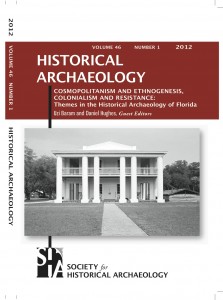
The new issue of Historical Archaeology, the Society for Historical Archaeology’s academic journal, 46(1) is hitting your desks and is certain to catch your attention. This is the first in a new generation of the journal that features a glossy color cover with the contents listed on the back for easy reference. But it deserves your attention for more than that. This thematic issue compiled by Uzi Baram and Dan Hughes looks at ethnogensis and other topics through the lens of the many cultures of Florida, and explores the ways in which archaeological and historical research can reveal the way the multiple cultural identities of Florida were 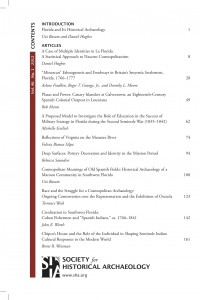 created, negotiated, and reformed. Baram and Hughes’ Introduction, attached, gives you a sense of the historical archaeology of Florida and the contents of this issue, which is one you won’t want to miss.
created, negotiated, and reformed. Baram and Hughes’ Introduction, attached, gives you a sense of the historical archaeology of Florida and the contents of this issue, which is one you won’t want to miss.
Download Baram and Hughes’ introduction to Historical Archaeology 46(1), Florida and its Historical Archaeology, for free here.
To receive Historical Archaeology quarterly, consider becoming a member of the Society for Historical Archaeology.




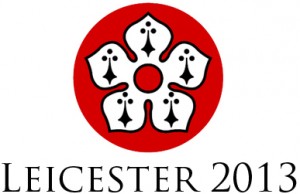
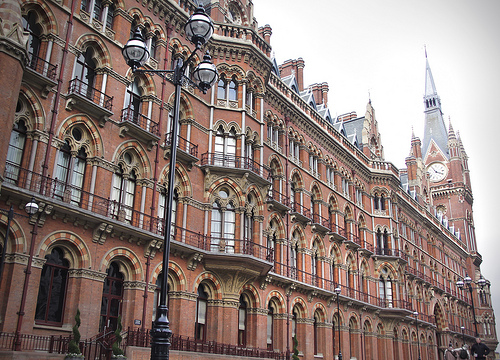
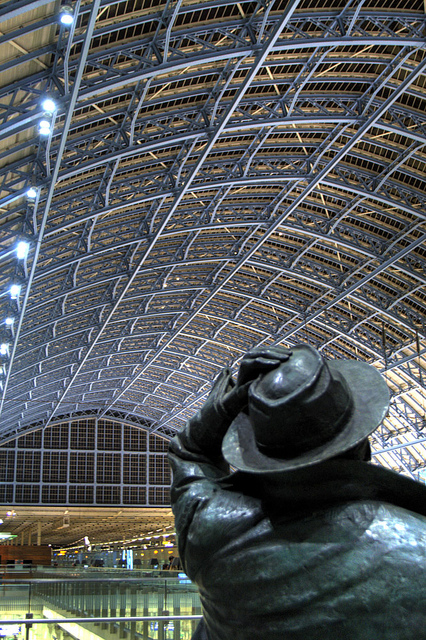


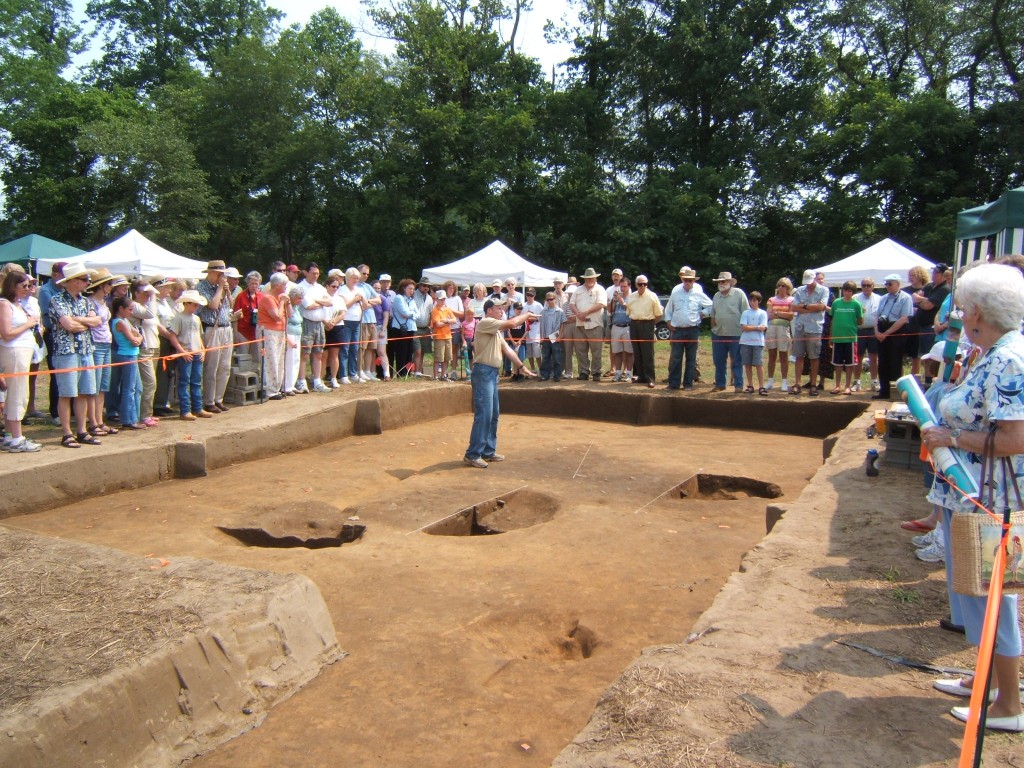
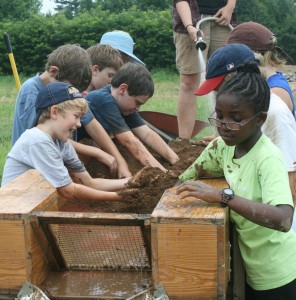
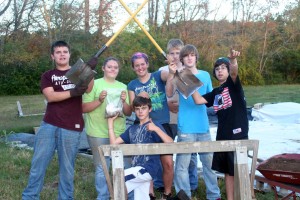
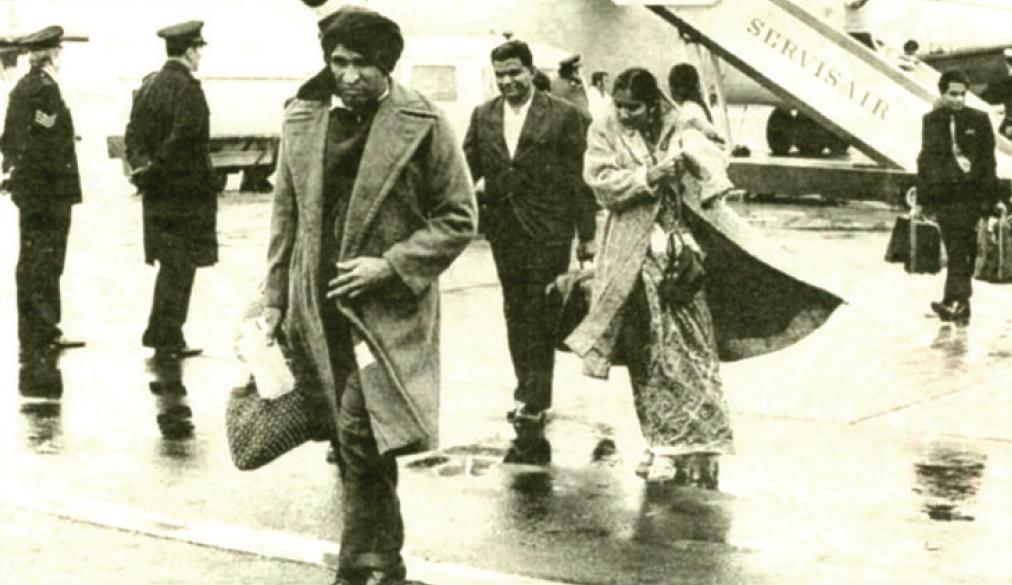

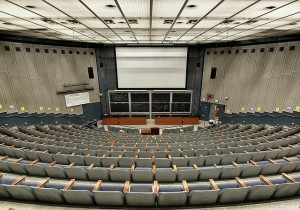
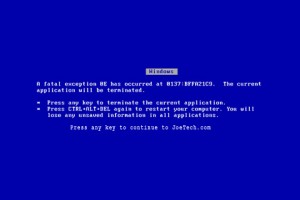
Pingback: WAC May 2012 eNewsletter – Volume 40 – World Archaeology Congress